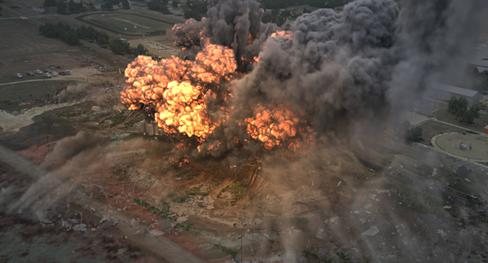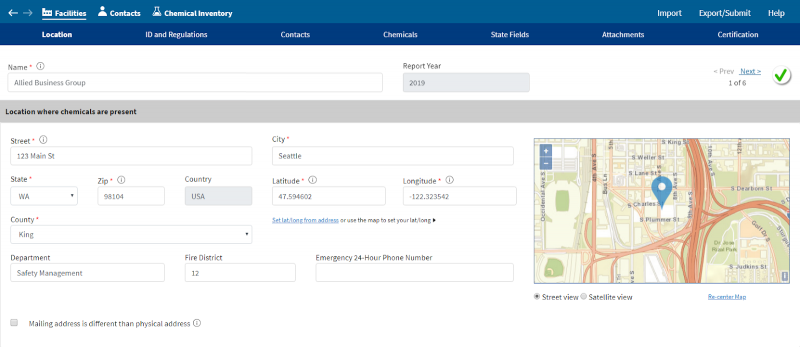NOAA’s Office of Response and Restoration is known for its scientific support for oil spill response, but did you know about the other ways we work to keep the public safe, the environment clean, and the economy moving? One of our strategies is to partner with other government agencies to produce tools such as the CAMEO® software suite, a collection of tools to help emergency responders plan for and respond to hazardous chemical spills.
Through a 32-year partnership with the Environmental Protection Agency, the CAMEO team produces software that has over 1.2 million yearly visitors to the online tools and nearly 200,000 yearly downloads of the desktop programs. Some of this software, such as CAMEOfm and Tier2 Submit™, help facilities comply with EPA regulations that require facilities with hazardous chemicals to report the chemicals to their firefighters and local and state emergency planners.

The Tier2 Submit program and associated legislation have increased responder awareness of the hazards in the community and helped them plan for and better respond to incidents. When planners and responders aren’t aware of these hazards, disaster can strike. In 2013, for example, a chemical explosion struck West, Texas, killing 15 people. The responders that rushed to the scene were not aware of the dangerous chemicals inside the facility. Tier2 Submit aims to empower local and state planners and responders to avoid tragedies such as this.
Although Tier2 Submit has been helping increase awareness of local hazards, it needed an update to help users enter their data more accurately, easily, and quickly. Additionally, technology had advanced dramatically since the program’s birth in 2001, and opened doors to new features for today’s modern users. In order to learn which new features and improvements the development team should focus on, the team used a process called Human-Centered Design. This design approach—one that builds tools based on how humans behave, rather than forcing humans to change their behavior in order to learn how to use new tools—is used more and more widely across local, state, and federal governments. It involves listening to users and understanding what the program does well, and what specific areas could be easier, faster, or more intuitive.
The Tier2 Submit development team spoke with dozens of users from across the U.S. to determine what new features should be added and how to make the program more user friendly. This approach has resulted in some new features that are widely applauded by users, including:
-
A new map interface to help users verify the position of their facility with hazardous chemicals.
-
New real-time validation to help users identify errors they might have made when entering their data.
-
The ability to select records in a list, which gives users more control over how they edit and export their data.
-
The ability to export data to a file type that can be opened and edited in a spreadsheet software like Excel.
-
New support topics to help users if they need additional information on how to use the program.

Users have given much constructive feedback and praised the final product, which was only possible with input of the emergency planning and response community.
“This system works great. This system flows very well and has good information tabs at appropriate locations on the screen. The ability to see either map view or street view is a great enhancement.” – A Tier2 Submit user
Another user lauded the live validation checks and added that the new changes were a drastic improvement to filter accuracy, with a simpler way to figure out required data fields.
This year, the CAMEO team will continue to add enhancements and improvements to their software, as well as release a completely redesigned version of another CAMEO tool called CAMEOfm. If you are a user of CAMEO software, the team always welcomes comments and feature requests at orr.cameo@noaa.gov.